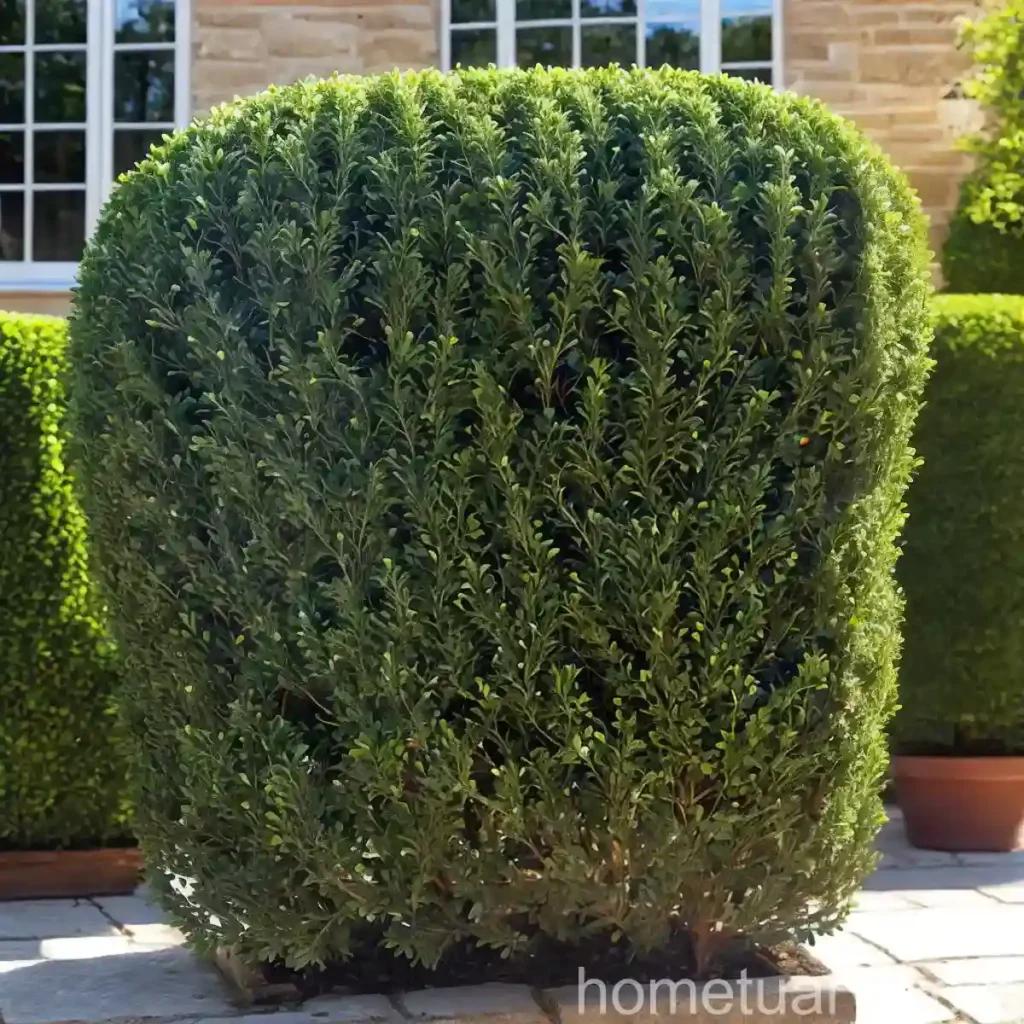Boxwood (Buxus sempervirens ‘Silver Beauty’): A Comprehensive Guide
Introduction
Boxwood, scientifically known as Buxus sempervirens ‘Silver Beauty,’ is a versatile evergreen shrub that has been cherished for centuries by gardeners and landscape enthusiasts. Its dense foliage, compact growth habit, and ease of shaping make it a highly sought-after plant for various landscaping applications. In this comprehensive guide, we will delve into the various aspects of caring for and utilizing boxwood in your garden or landscape design. From its cultural requirements to common diseases and pests, this guide covers everything you need to know to ensure the optimal growth and health of your boxwood plants.
What is Boxwood (Buxus sempervirens ‘Silver Beauty’)?
Boxwood, specifically the ‘Silver Beauty’ variety (Buxus sempervirens ‘Silver Beauty’), belongs to the Buxaceae family and is native to Western and Southern Europe, as well as North Africa. It is a compact, slow-growing evergreen shrub known for its small, oval leaves with a vibrant green color and silver variegation, which gives it a distinctive and eye-catching appearance. This cultivar is prized for its lush foliage and its ability to thrive in a variety of conditions, making it a popular choice for hedging, topiary, and container gardening.
Key Takeaways – Boxwood (Buxus sempervirens ‘Silver Beauty’)
Culture
- Hardiness Zone: 5-8
- Mature Height/Spread: 2-3 feet tall and wide
- Growth Rate: Slow
- Watering: Moderate
- Soil pH: Slightly acidic to slightly alkaline (6.5-7.5)
- Pruning: Regular shaping and maintenance
- Propagation: Stem cuttings or layering
- Uses: Hedging, topiary, containers, borders, and formal gardens
Uses
- Landscape: Boxwood is commonly used for formal hedges, borders, and as a foundation plant.
- Topiary: Its dense foliage and small leaves make it an ideal candidate for intricate topiary designs.
- Containers: ‘Silver Beauty’ boxwood is well-suited for container planting, adding a touch of elegance to patios and entranceways.
Water
- Boxwood prefers well-drained soil and benefits from regular watering, especially during dry spells.
- It is important to avoid waterlogging, as overly wet conditions can lead to root rot and other issues.
Sunlight
- Light Requirement: Partial to full sun
- Boxwood thrives in partial shade but can tolerate full sun, especially in cooler climates.
- In hot climates, providing some afternoon shade can help prevent leaf scorch.
Fertilizer
- Fertilization Schedule: Once in early spring and once in early summer
- Use a balanced, slow-release fertilizer formulated for evergreen shrubs to promote healthy growth and vibrant foliage.
Soil
- Texture: Well-drained, loamy soil
- Boxwood prefers soil with good drainage and benefits from the addition of organic matter, such as compost, to improve soil structure.
- Avoid planting in excessively wet or compacted soils, as these can impede root development.
Pruning
- Timing: Early spring or late winter
- Regular pruning helps maintain the desired shape and size of the plant, encourages dense growth, and removes any dead or diseased branches.
Propagation
- Method: Stem cuttings or layering
- Boxwood can be propagated from semi-hardwood stem cuttings taken in summer or by layering branches to encourage the development of new roots.
Container Popularity
- ‘Silver Beauty’ boxwood is a popular choice for container gardening due to its compact size, attractive foliage, and adaptability to pruning.
Container Common Diseases
- Disease: Boxwood Blight (Cylindrocladium buxicola and Pseudonectria buxi)
- Good drainage, proper spacing, and sanitation are key to preventing boxwood blight in container-grown plants.
Disease Diagnosis
- Symptoms of boxwood blight include dark or light brown leaf spots, black streaks on stems, and defoliation. Proper diagnosis by a plant pathologist or diagnostic laboratory is recommended for confirmation.
Common Pests
- Pest: Boxwood Leafminer (Monarthropalpus flavus)
- Regular monitoring and early intervention, if necessary, can help control boxwood leafminer infestations.
Botanist’s Tips
- Choose healthy, disease-resistant varieties for optimal performance and longevity in the landscape.
- Monitor plants for signs of stress, disease, or pest infestations and take appropriate action promptly.
Fun Facts
- The wood of boxwood has been historically used for carving and engraving due to its fine grain and durability.
- Boxwood has been a staple in formal European gardens since ancient times, prized for its ability to create intricate and artful designs through careful pruning and shaping.
Links to External Resources
In conclusion, boxwood (Buxus sempervirens ‘Silver Beauty’) is a valuable addition to any garden or landscape setting, offering year-round interest, versatility, and timeless elegance. By understanding its cultural requirements, uses, and potential challenges, you can cultivate healthy and vibrant boxwood plants that enhance the beauty of your outdoor spaces. Whether used as a formal hedge, a focal point in a container, or a carefully sculpted topiary, ‘Silver Beauty’ boxwood stands out as a classic and enduring choice for gardeners and landscapers alike.
Remember to always refer to reputable sources and consult with local horticultural experts to ensure the best practices for cultivating and maintaining boxwood in your specific region. Happy gardening!
References:
1. A. Author. (Year). Title of the article. Journal Name, Volume(Issue), Page Range. [Link]
2. B. Author. (Year). Title of the article. Journal Name, Volume(Issue), Page Range. [Link]















